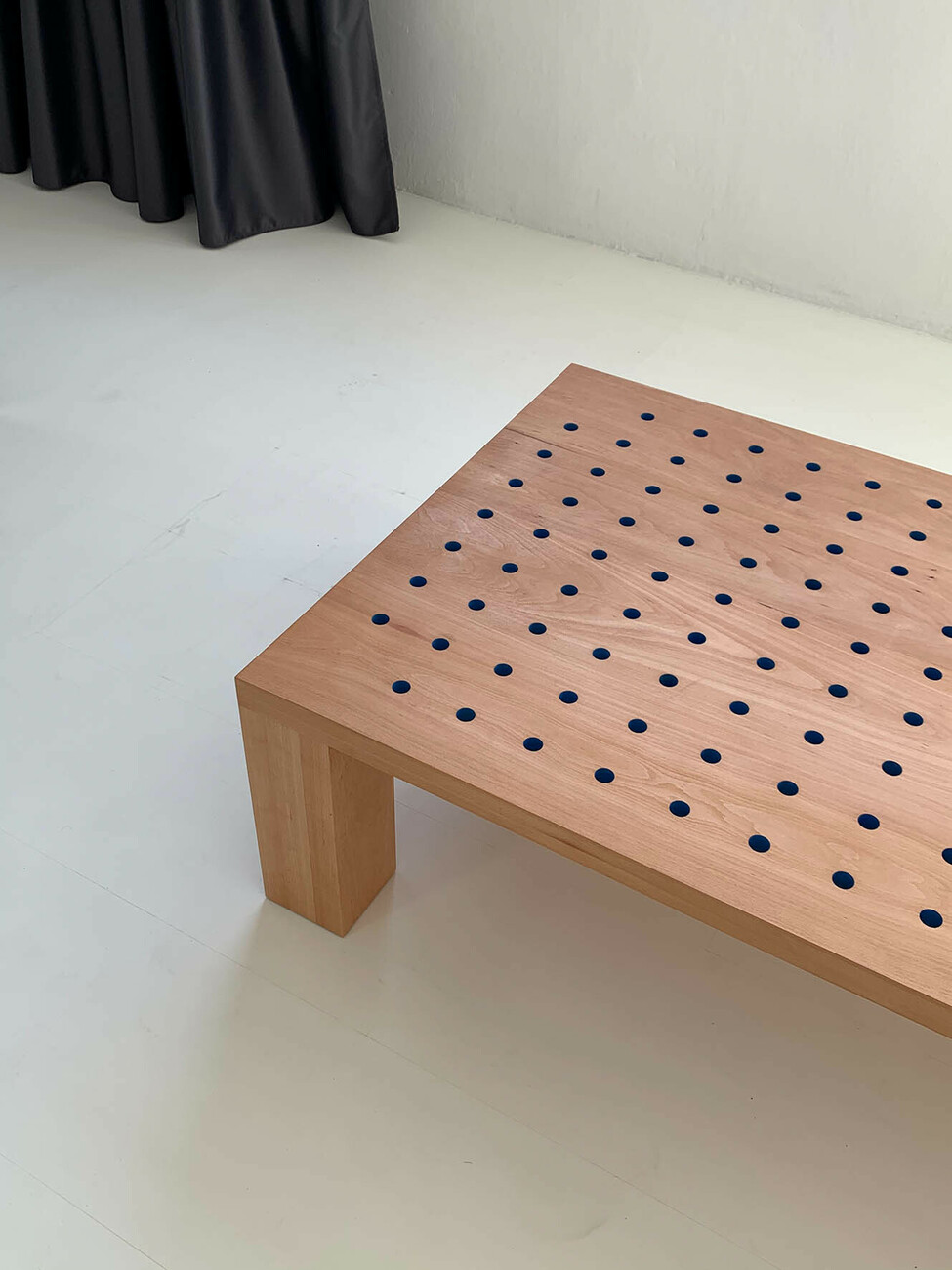Design without limits
The objects by Max Enrich lie somewhere between art and design: His furniture is reminiscent of sculptures and is more likely to be found in galleries than at furniture trade shows. He plays around with proportions, with the ratio between slender and bulky, between light and heavy. Often, the starting point for his works is a certain material. Hence, for example, the table “Quentin Travertino”, which consists of a slab of travertine punctured by the four legs of its red steel frame. Or the virtually transparent “Moiré” chair made of perforated steel, which appears almost to float. In an interview the designer, who lives in Barcelona, explains his approach to new projects and why he prefers his briefings to be short.
Judith Jenner: Max Enrich, you work with very different materials. Is the material generally the starting point for a new project?
Max Enrich: Sometimes I find a new material or a new way of working with a familiar material. What I think most creatives have in their minds, though, is a kind of database, to which you’re continually adding new information. When I design something, I take ideas from there and mix them up to form a cocktail with the information I have. That’s how it starts. In general, I work with long-familiar materials such as glass, wood, stone or metal. In my work, the innovation lies in the way I use them. The most important thing, though, is that I have the idea in my mind for a while first. Then I wait until I find the right project for it, which might take years – provided I don’t forget it first.
Your work lies somewhere between art and design. How much freedom do you have in its execution?
Max Enrich: I like short briefings: What is the furniture item for? Where should it go? That’s really enough for me. If I get overly precise instructions then I’m limited in my creativity. What’s more interesting for me is the discussions with the client, when I see the way they live or how they express themselves creatively. My job is to imagine something that they have perhaps never seen before and which they would never even have thought of. I see my role as expanding their powers of imagination.
With a lot of projects, you play with the proportions of furniture. Some of the items seem more like sculptures.
Max Enrich: The nice thing about design is that it doesn’t have a start or end point. It can be very ambiguous and tend towards art or architecture. The lowest common denominator is functionality, whereby decoration is also a function. Many customers are looking to fill a corner, be it with a chair, a side table, or a plinth for a sculpture. If you can put a glass of water on it, then the item is already fulfilling a purpose.
One very interesting work is your floor lights for Gaudí’s Casa Batlló. How did you approach this project?
Max Enrich: For this project, I wasn’t given a briefing. I had long had an idea about doing something with lights, and when I visited the house in the daytime, a lot of ideas came to me straight away. On my second visit in the evening, however, I realized that the rooms were already brightly lit by the streetlamps. So that was it for my light project (laughs).
What happens next?
Max Enrich: I got the idea to create pillar-shaped lamps. They contrast with the richly decorated building, which has barely any straight lines. It is hard to compete with all its details: The doorhandles are handmade and the walls are elaborately painted. I had to find something that caught the attention more than the building itself, and so I opted for the complete opposite. The lights are around 1.80 meters tall. Instead of hiding the cables, we made them part of the installation. More than light, it was their sculptural expression that was important to me here. Because the house is currently closed, I have the freedom to shift the lights around and position them in different places. It’s a great feeling, being able to just walk in and out of a building that normally hosts 3,000 visitors a day.
Why did you select foam as the material?
Max Enrich: I wanted something modern, artificial – something that was cold in a way. On top of this, there were the great colors that I found at a producer here in the area. It’s one of those materials I’ve had in the back of my mind for a long time.
Gaudí is firmly rooted in Barcelona. Do you feel a connection to his architecture?
Max Enrich: Aside from six months in London and lots of trips abroad, I have spent my entire life in Barcelona. I can’t see any parallels between his work and mine, but it certainly does something to you, being continually surrounded by this Mediterranean art and architecture. Maybe Gaudí doesn’t inspire me directly, but our inspirations may well come from the same roots.
What projects are you working on right now?
Max Enrich: Currently I have a solo exhibition at the Il Lacions Design Gallery in Barcelona, where we mainly showing lights with artificial forms. For me, light has a magical quality and also presents a huge challenge in terms of design. After all, lights have to function when they’re both on and off. I hope to design even more lights in future.
"TUBS I LLUMS"
by @maxenrich
Until 30 June 2021
Il·lacions Gallery
Rosselló 231, 2-2
08008 Barcelona
Tuesday to Friday 5 – 8 pm
Visiting hours by appointment only























